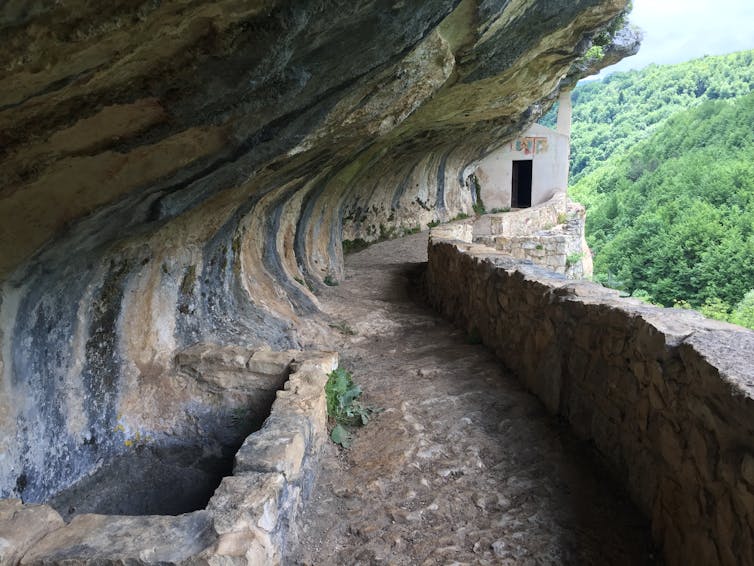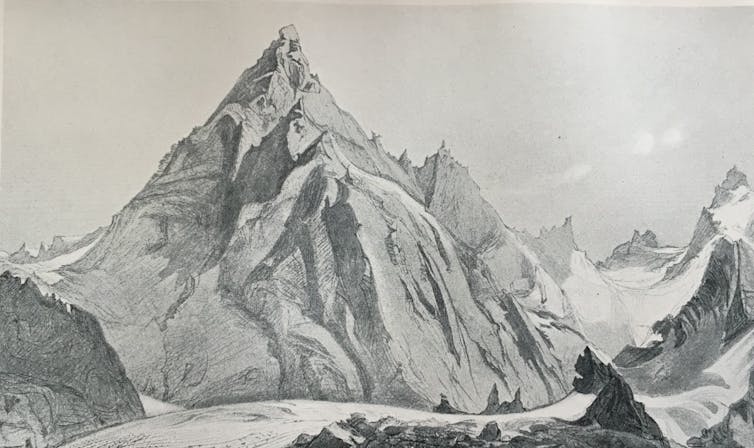In 2019, alpinism was recognised by UNESCO as an intangible heritage of humanity and “shared culture made up of knowledge of the high-mountain environment, the history of the practice and associated values, and specific skills”. However, alpinism is inextricably linked to mountains – places of extraordinary interest that need to be defended even more. The Alpine landscape protection initiatives address issues of territorial planning, sustainable development, tourism, agriculture, and energy, but it is also essential to consider these topics through the lens of mountains’ historical and cultural values.
One session at the 10th International Congress of the Associazione Italiana di Storia Urbana (Italian Society of Urban History) focused on this very theme. Titled “The mountain landscape between eremitic contemplation, aesthetic attraction and sporting conquest”, the 6.03 session explored current challenges and called for mountains to be protected not only as a natural heritage, but also as cultural heritage.
To achieve this ambitious goal, we must know and highlight the multiple meanings and cultural values of mountain landscapes. Only then can we implement integrated protection strategies similarly to what happens in the most well-known monumental sites.
Bearing the brunt of climate change
Due to melting ice and snow, mountains’ ecosystems are particularly vulnerable to climate change. They are also exposed to increasingly intensive visits, which can damage them irreversibly if the values to be protected are not clearly identified. Their cultural relevance is often overlooked, however, or it’s exploited by tourism promotion and distorted by folklorisation phenomena.
Reflection on natural and cultural heritage should not be limited to sites of exceptional universal value; it must recognise mountain territories as places to be preserved not only for their environmental characteristics, but also for their historical and cultural values.
In the last 50 years, many alpine environments have significantly changed in appearance and in a few years’ time, several glaciers could be gone for good. This is not only a serious environmental problem, but an irreparable cultural loss. Glaciers are indeed archives of valuable information for science, as well as fading historical landscapes.
From the 17th until the 19th century, upper-class young European men were expected to take on a ‘Grand Tour’ through Europe up to Italy. ‘Eternal snows’ required the travellers to make at least one stop in the Alps on their adventurous and difficult journeys to get there (William Windham 1741; Pierre Martel 1742).
Hannibal crossed the Alps in 218 BC, and left traces in the descriptions of historians. Constructed over the centuries, structures such as huts and shelters, roads, pilgrim hospices, and churches have shown how deep our relationship has been with mountain territories. During the First and Second World Wars, more notable material testimonies were left behind, including fortifications, tunnels, trenches, shelters, barracks and places of the Resistance.

Hermitage of San Bartolomeo in Legio, Italy. Author provided
These artefacts are part of a widespread cultural heritage, the knowledge of which is essential to recognise if we are to preserve them. In fact, such sites, often abandoned, are hardly perceived as monumental. What is needed is for them to be seen in a broad perspective that considers them a “system” to be protected for their historical, aesthetic, landscape, identity values, not just as individual artefacts.
The cultural pull of mountain landscapes
The spiritual and intellectual attraction to the mountains is testified by hermits, artists and scientists well before the age of mountaineering, which officially starts with the first ascent of Mont Blanc in 1786. However, expeditions to the mountains began much earlier for scientific and cultural reasons (Albrecht von Haller 1729; Jean-Jacques Rousseau 1764; Horace Benedict de Saussure 1774).
Since then, scholars and travellers have turned their interest not only to monuments of antiquity but also toward the wonders of nature, specifically to the alpine glaciers. The first material evidence of Alpine visits was the “Temple de la Nature”, a refuge built in 1795 in Montenvers to observe the Mer de Glace, still visible today among the hotels built later.
In the same years, Orazio Delfico’s ascent of the Gran Sasso d’Italia in 1794 was considered the first ascent of the highest peak of the Apennines. However, as early as 1573, Francesco de Marchi – an architect following Margaret of Austria – reached the mountain summit and published the chronicle of the ascension in his “Treaty of Military Architecture”. Other writers and scientists to have scaled mountains include Francesco Petrarca on Mont Ventoux in Provence (1336), Leon Battista Alberti on Monte Velino in Abruzzo (mid-15th century), Leonardo da Vinci on Monte Rosa and perhaps also in Abruzzo (late 15th century to early 16th Century).
“Cathedrals of the Earth”
In the 19th century, the English writer John Ruskin celebrated mountains by describing them as “Cathedrals of the Earth”. Following up on Lord Byron’s depiction of them as [“Palaces of Nature”], such an expression captured at once the landscapes’ magnificence and called upon visitors to respect them as sacred.

John Ruskin’s sketch of the Aiguille Blaitière, circa 1856. Wikipedia, CC BY
All this demonstrates a very close relationship between the protection of cultural and mountain heritage. Thus, mountains’ cultural values precede the mountaineering interest that developed with the birth of the Alpine Clubs first in the United Kingdom (1857), then in Austria (1862), Italy (1863) and France (1874). Since then, mountains have increasingly become synonymous with competitive challenges, sometimes with alienating outcomes.
Founded by John Muir in 1892 in San Francisco, the Sierra Club was, by contrast, one of the first organisations for the conservation of the mountain landscape. Well ahead of his time, Muir held up mountain parks and reserves as a necessity for human well-being and ‘sources of life’.
“It is by far the grandest of all of His special temples of Nature I was ever permitted to enter. It must be the sanctum sanctorum of the Sierras.” (John Muir, Letters to a Friend. Written to Mrs. Ezra S. Carr (1866-1879) in J. Muir, Andare in montagna è tornare a casa. Scritti sulla natura selvaggia (trad. it. Caterina Bernardini)
Any reflection about the future of heritage must consider the close interaction between tangible and intangible heritage (otherwise there is the risk of neglecting the material assets connected to intangible values), and then extend it to the safeguard of the planet as a World Heritage. In this sense, it is necessary to integrate the defence of territory and environment with the identification of its multiple cultural values.
This article was written by Carla Bartolomucci, Associate professor of architectural conservation, University of L’Aquila. It is republished from The Conversation under a Creative Commons license. Read the original article.
Cover image: Rocca Calascio, a mountaintop fortress in the province of L’Aquila in Italy. It bears witness to the long relationship between humanity and mountains, and how natural landscapes are also culture ones. UNESCO, Author provided.


